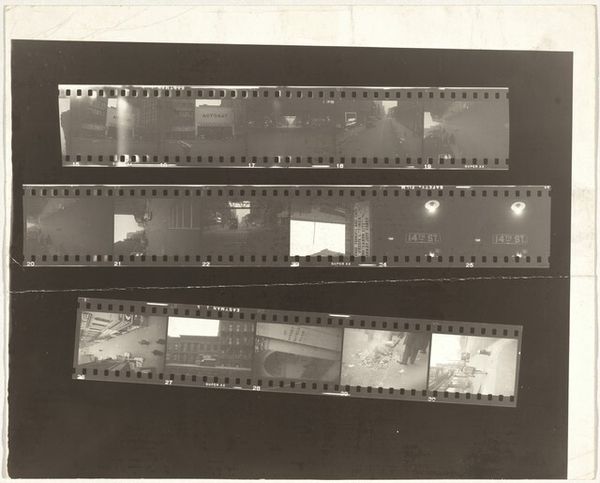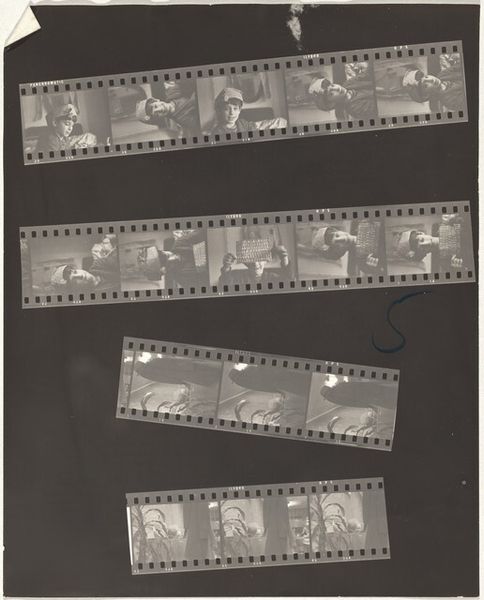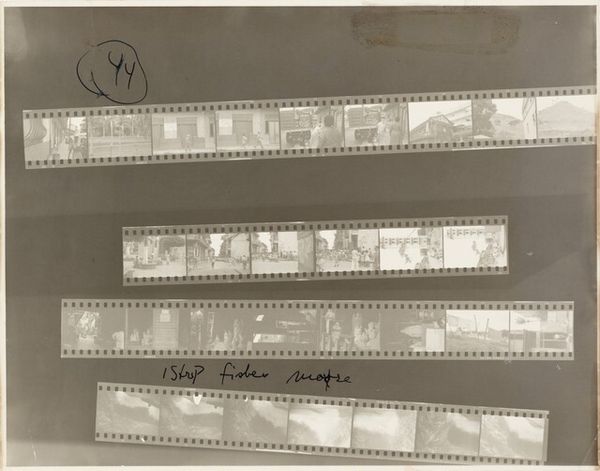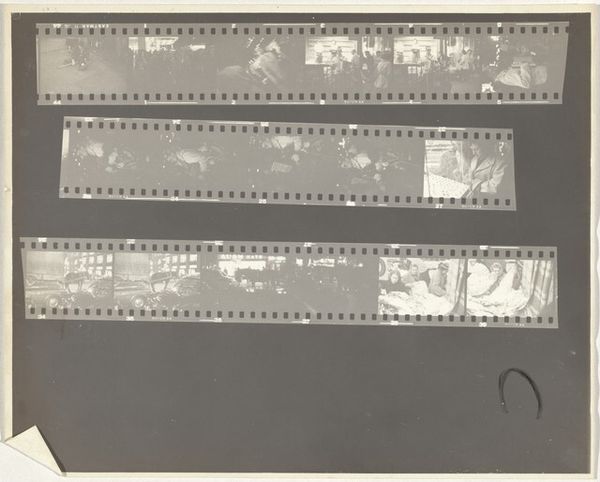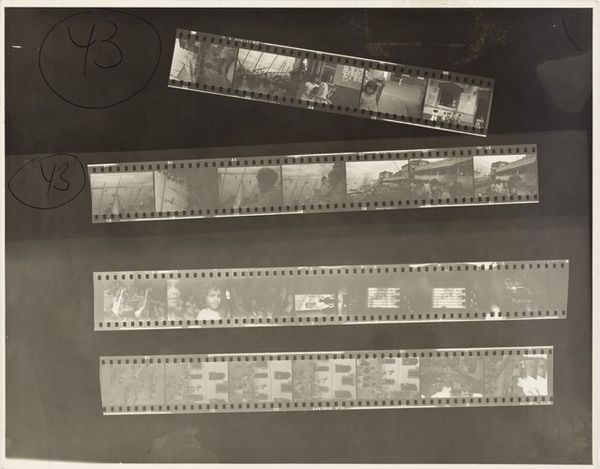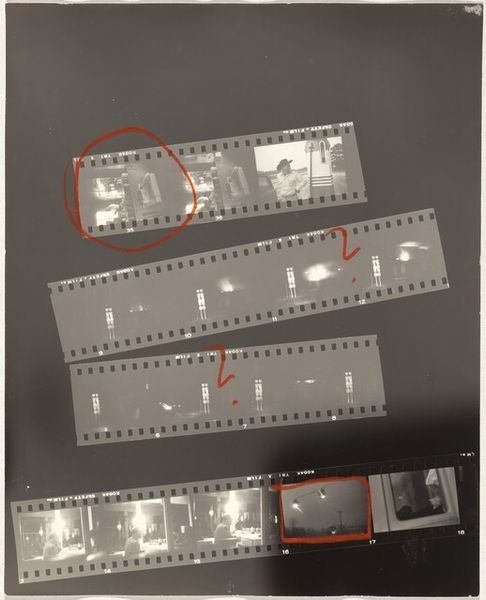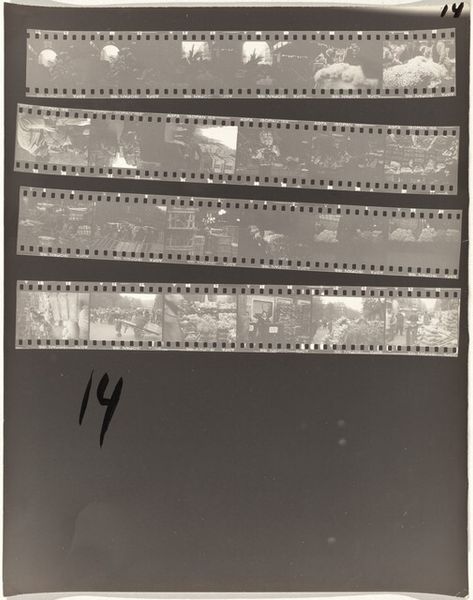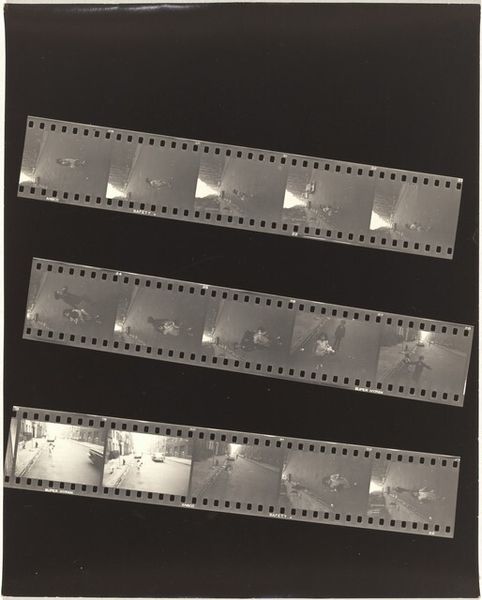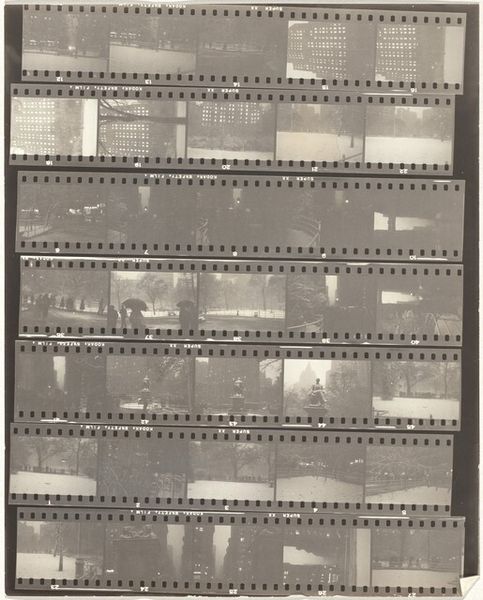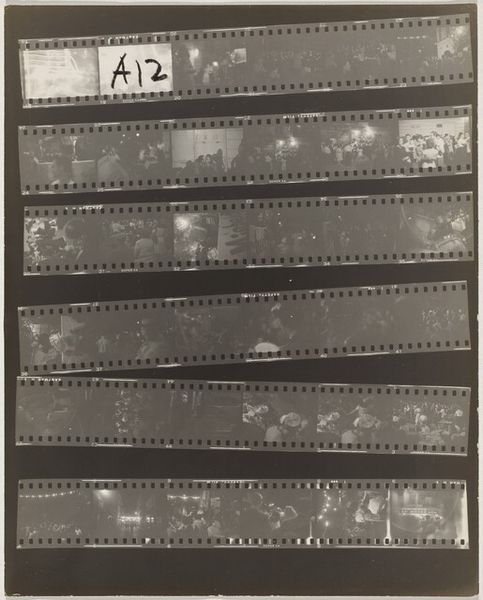
print, photography, gelatin-silver-print
#
abstract-expressionism
#
conceptual-art
# print
#
outdoor photography
#
street-photography
#
photography
#
gelatin-silver-print
#
monochrome
Dimensions: overall: 25.2 x 20.2 cm (9 15/16 x 7 15/16 in.)
Copyright: National Gallery of Art: CC0 1.0
Curator: Robert Frank’s "Nixon Campaign 30" from 1960, a gelatin silver print. It’s a rather striking arrangement of photographic strips on what appears to be a black card. What's your initial reading? Editor: Stark. Utterly stark. The high contrast plunges one into a specific kind of political unease that echoes through history. Curator: Observe how the sequential nature of the film strips implies temporality and narrative. Frank isn't presenting a single, definitive image but rather a progression, a chain of events. The compositional choice to include multiple strips allows for an almost cinematic reading. Editor: Precisely. Film as chronicle. Consider the serpentining lines of the strips—the idea of rhetoric unfurling, perhaps. And what are the recurring motifs in those windows—they appear to echo cages. Nixon’s campaign promises of a "safer America" quickly translated to surveillance culture for many. Curator: Let’s consider the textural contrast. The glossy surface of the photographic emulsion against the matte black of the background establishes a certain tension. Then there is the artist's hand visible in the composition: strips cut, arranged, even a frame highlighted with red. The work destabilizes the idea of photographic objectivity. Editor: And how does the monochrome palette play into this? It drains any potential for warmth, creating a detached, almost clinical feel, focusing instead on shadow and stark contrast, reflecting the divisive figure that was Nixon. Consider, also, that Frank made this after returning to the U.S. having spent time away, suggesting that he brought this detached, critical gaze on what had transpired while he was gone. Curator: Note, too, that the blank frame, the interruption of the photographic sequence, could signify an erasure, an elision—forcing the viewer to contend with absences, challenging the authority of the image to represent. Editor: Yes, absences speaking volumes. In this configuration, the repeated visual cues around institutional frameworks seem to speak directly to fears about governmental control, or even manipulation, made visible via Frank’s collage of photographic documents. Curator: Frank challenges us to engage actively with the photographic image, not to passively accept it. His combination of form and subject results in a visual language demanding decipherment. Editor: Indeed, a potent reminder that images are never neutral. This piece invites reflection on the cultural memory that even a series of seemingly banal frames can invoke.
Comments
No comments
Be the first to comment and join the conversation on the ultimate creative platform.
